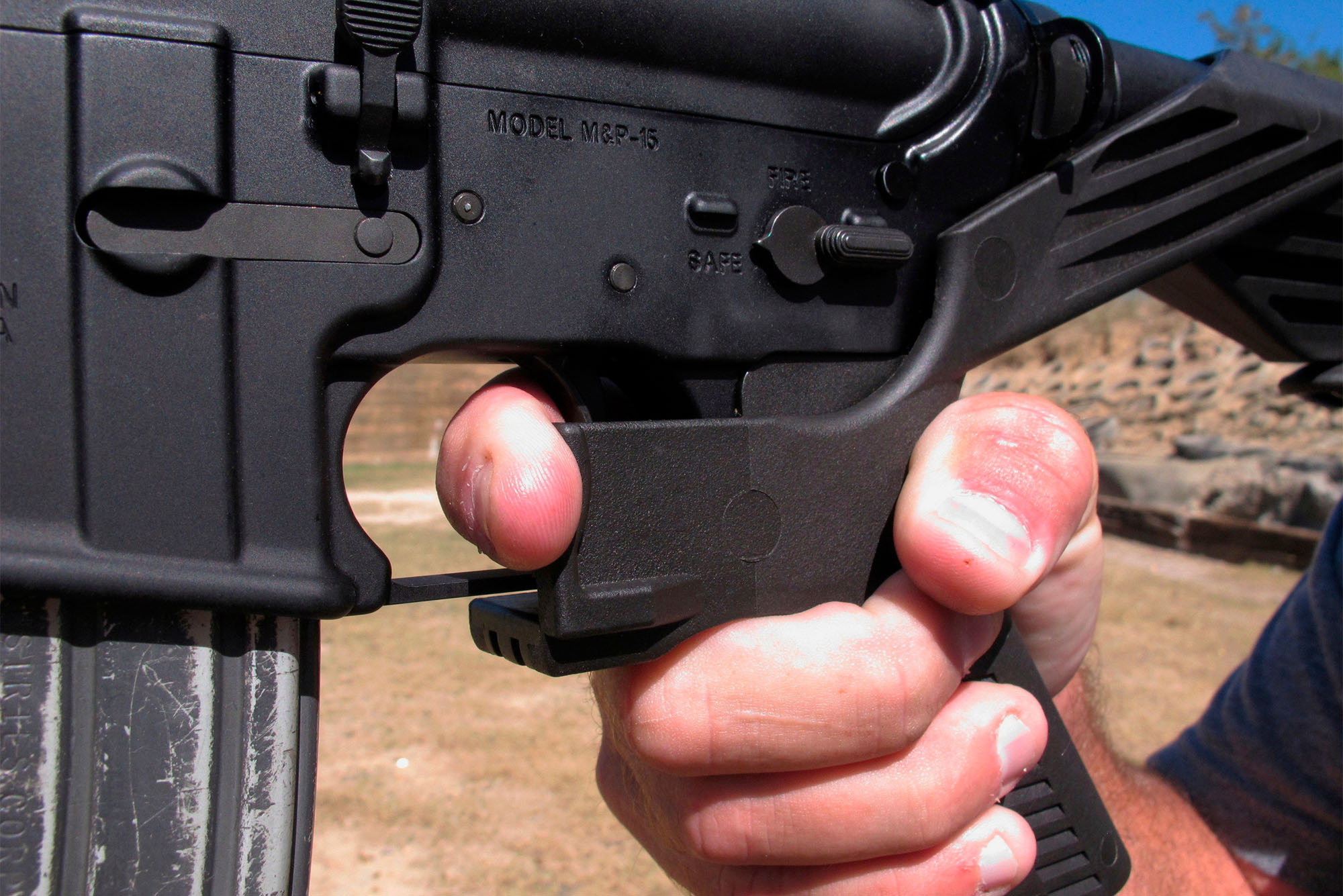Supreme Court Strikes Down Ban on Gun Bump Stocks

The interior of Las Vegas shooter Stephen Paddock’s 32nd floor room of the Mandalay Bay hotel, showing many of the guns he used to massacre 60 people at a country music festival on October 23, 2017. Photo by Las Vegas Metropolitan Police Department via AP
Supreme Court Strikes Down Ban on Gun Bump Stocks
6-3 decision is “a major setback in preventing mass shootings,” says School of Law lecturer
The Supreme Court’s conservative majority on Tuesday struck down a Trump-era ban on bump stocks, devices that allow semiautomatic weapons to fire at high speed like machine guns, which was enacted after the deadliest mass shooting in US history.
The 6-3 decision in the case Garland v. Cargill is “a major setback” in preventing mass shootings, says Cody Jacobs, a School of Law lecturer, whose research interests include firearms policy and the Second Amendment.
The ban was put in place by the federal Bureau of Alcohol, Tobacco, Firearms and Explosives (ATF) after the October 23, 2017, massacre in Las Vegas, where a gunman using bump stocks on several semiautomatic rifles killed 60 people attending a country music festival, firing more than 1,000 rounds in just a few minutes. Hundreds more were wounded by gunfire or injured in the resulting stampede to safety.
Bump stocks “obviously enabled the person in Las Vegas to fire so many rounds so quickly,” says Jacobs. “Even a semiautomatic gun, of course, as we’ve seen, can do a lot of damage very fast. But, you know, a bump stock takes that to another level.
“And that’s why even the ATF under President Trump recognized that this needed to be regulated. And unfortunately, the court today in a six to three partisan decision has rolled that back.”

In a majority opinion written by Justice Clarence Thomas, the court ruled 6-3 that the way a bump stock works does not meet the legal definition of a machine gun. The ATF had banned the devices under laws covering parts that can be used to convert a weapon into a machine gun.
Machine guns fire continuously with a single pull of the trigger. When attached to a gun, bump stocks essentially use the momentum of the gun’s recoil to greatly speed up the firing process, but still require repeated “function” of the trigger.
“A bump stock does not convert a semiautomatic rifle into a machinegun any more than a shooter with a lightning-fast trigger finger does,” the opinion says.
The government’s defense of the rule “rests on the mistaken premise that there is a difference between the shooter flexing his finger to pull the trigger and pushing the firearm forward to bump the trigger against his stationary trigger,” notes the opinion, which includes several diagrams of firearms parts and functions.
“It’s a narrow decision in the sense that it only applies to bump stocks,” Jacobs says. “But I don’t think it should be underestimated that this is another example of the court’s hostility towards gun regulation in general.”
I don’t think it should be underestimated that this is another example of the court’s hostility towards gun regulation in general.
The decision arose from a lawsuit by Michael Cargill, described by the Austin American-Statesman as “a gun rights advocate and the owner of Central Texas Gun Works,” who had surrendered two bump stocks to authorities under the ban. Among groups filing briefs in support of his appeal were the National Rifle Association, the National Shooting Sports Foundation, the National Association for Gun Rights, and the Second Amendment Defense and Education Coalition.
The decision is narrow in that it depends on specific statutory wording and guns’ function. It is not a Second Amendment decision.
“Congress could theoretically change the statute. I’m not holding my breath for them to actually do that,” Jacobs says. “But I certainly don’t want people to underestimate the real impact that this could have… Unfortunately, something like what happened in Vegas could happen again.”
The majority consisted of Justices Thomas, John Roberts, Samuel Alito, Neil Gorsuch, Brett Kavanaugh, and Amy Coney Barrett. Justice Sonia Sotomayor, joined by Justices Elena Kagan and Ketanji Brown Jackson, filed a dissent that called the decision “deeply regrettable.”
The case was seen by some observers as part of a wider effort by conservatives to rein in the regulatory power of federal agencies.
No motive or explanation has been found for the 2017 massacre by 64-year-old businessman Stephen Paddock, who opened fire from two connected rooms on the 32nd floor of the Mandalay Bay hotel overlooking the outdoor Route 91 Music Festival. Country music singer Jason Aldean was performing when the shooting began. Some 58 people died at the scene or within hours at hospitals, and 2 more succumbed to their wounds weeks later. Paddock killed himself as police closed in.

Comments & Discussion
Boston University moderates comments to facilitate an informed, substantive, civil conversation. Abusive, profane, self-promotional, misleading, incoherent or off-topic comments will be rejected. Moderators are staffed during regular business hours (EST) and can only accept comments written in English. Statistics or facts must include a citation or a link to the citation.